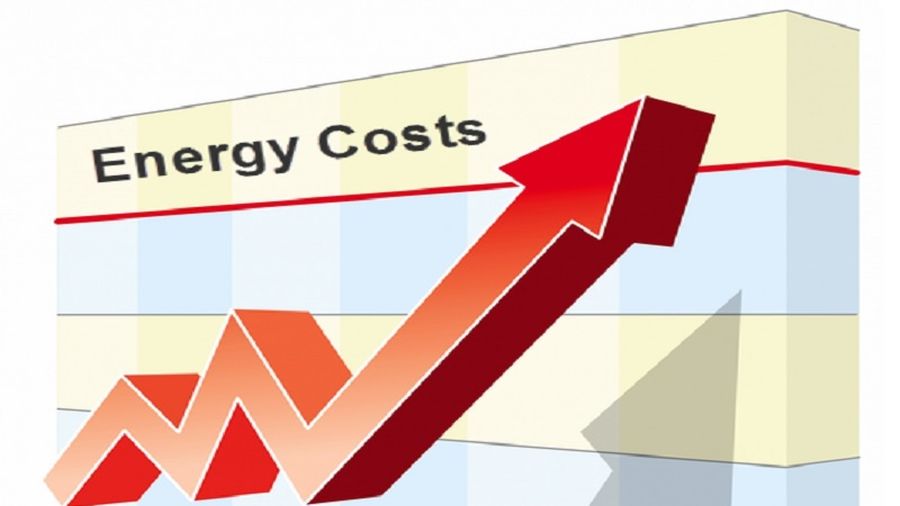What’s Going On With Energy Prices?
Realistically, however, we must assume that even if, according to long-term forecasts, we have already reached the peak of the trend, and the prices of factors influencing the increase in electricity prices will now decline until they stabilise in 2023 at a level similar to 2018 – it still does not change the fundamental paradigm of whole transition
The increase in electricity prices is often presented today as just another supply shock, what is not precise. For British households, the observed price increase, the highest since 2018 means a decrease in available income, and thus in consumption and aggregate demand. It is also one of the main catalysts of the rising inflation, which we see across Europe. However, since we know that the generation of electricity itself must be constantly equal to the demand and that the essence of the shock is its unpredictability, randomness and suddenness – then we must note that we are dealing with strategic market risk rather than with something presented today as an almost surprising catastrophe.
The shock everyone predicted
It is hard to call ‘a shock’ situation where the increase in prices is a recognized trend. When at least some of the external conditions affecting the energy mix are predictable (wind strength in the winter season) and when protective measures were taken a few months ago (Ofgem 2021). It is another matter whether these mechanisms proved to be effective – but since they had been prepared, today’s stories about “bad Putin and even worse European speculators” do not sound so credible anymore. The threat was known, it was caused intentionally and artificially by politicians, ideologists and the great capital behind them. And only ordinary citizens were not properly prepared for that, not even mentioning any attempt to avoid the danger.
The question is not whether the price increase could have been predicted, because we know that it had been predicted and assumed, i.a. as part of the discussion on the Fit for 55 package. It seems more important whether it was possible to correctly define the expected scale of growth and do we understand its causes and how it translates into the implemented strategies. It should be determined whether the current situation on the supply side can be an element of demand management primarily to achieve the assumed climate and social-economic targets. And also checking whether, once – these goals are not contradictory with each other, and second whether the current shape of the energy transformation does not coincide with the present problems. Certainly, the average energy consumer, especially the non-economist, is primarily interested in whether prices will decrease.
The Three Horsemen of the Apocalypse: Liberalisation, Climatism, COVID
Each market should be analysed with an understanding of its paradigm and general characteristics. To a varying degree, but the European energy market has been largely liberalised over the past decades, from the British example, pioneering and exemplary, through the situation of Denmark, already largely based on renewable sources, with a decentralised system based on subsidies and Germany, with also a decentralised system with, however, strong participation of the state and a significant civic factor and pressure on the energy tax. In general, all European countries (EU and non-EU) made an effort to ensure that intensive liberalisation was accompanied by no less involvement in sophisticated mechanisms of subsidies and tariff regulation.
In the UK even supporters of this transformation, following “Free-Market Environmentalism” conception within a broad liberal agenda in the economy, combined with social and conscious transformation – finally noticed a departure from orthodoxy. Implemented reforms were in fact the top-down, without any original social base, which ultimately had an impact on the shape of the sector, organized around several main entities. Despite this, especially thanks to the favourable tax policy (reduced VAT rate on energy), a very mild increase in electricity prices was achieved in the UK in the period 1991-2018 (6.75% for households and 5.38% for non-households consumer prices). However, critics indicated that the implementation of renewable energy technologies (RE) was less advanced than in the compared European countries. The UK Government has made efforts to fill this gap using subsidies and tariff regulation more intensively, as well as introducing regulations to allow smaller entities to enter the market more widely. In practice, however, the RE trend, still presented as a bottom-up, post-hippie revolution – almost from the very beginning has been only one of many sectors of big capital and global financial speculation. And now we only feel the effects. Europe’s energy problems do not come from the fact that there is not enough RE installations, but that there are too many of them in the hands of speculators, so that price increases and even blackouts can be justified. And all for the ideological goal of achieving zero economic growth in the real, productive economy.
Less diversified energy mix, stopping at the transition from coal to gas with a simultaneous growing dependence on renewable sources and an inconsistent approach to nuclear power strengthened the sensitivity of the European energy market to the situation on the international gas market and The European Union Emissions Trading System. These two factors are of key importance for the development of the electricity price. And the situation was further complicated by the COVID-19 pandemic.
According to the Office of National Statistics data, the downward trend in electricity prices started already in 2019 with an increase in Q3. Despite periodic fluctuations, prices fell until Q1 2021, which was explained by the impact of the pandemic, the lockdowns, weaker human public and professional activity, resulting in a reduction in energy demand. This turned out to be a challenge for smaller retail entities previously trying to compete on prices. As a result, they began to fall out of the market, where along with the recovery, demand expectations that could not be satisfied in the short term appeared, which intensified the impression of instability. In the realities of the economy of shortage (in this case, above all, gas shortage) and the lack of a properly managed excess capacity that is quick to launch – already in Q2 2021 there was initially a mild upward trend in electricity prices, with a clear jump at the end of September 2021. Since then, especially politicians argue over the main reason for such a rapid change. The European Commission, using the position of most experts, charges primarily gas prices. But some analysts propose not to underestimate the significance of the increase of the EU ETS prices, emphasised by the governments of Spain and Poland.
There is a lot of natural gas, but …
Analysing both positions, it is necessary to research the price movements in both these complementary markets. As confirmed by the report of the International Energy Agency, the above-average increase in the TTF natural gas price compared to previous years was recorded as early as April 2021, and its further increase was described by experts directly as “fast and furious” (International Energy Agency, 2021, p. 68). Interestingly, however, as we know from the same source – this increase could not only be caused by a decrease in production, because the production for the Eurasian area, including Russia, which is the main supplier for Europe – increased after the actual decline in 2020, exceeding the pre-pandemic level. Natural gas production Eurasia (of which Russia): 2019 – 941 (738) bcm, 2020 – 884 (692) bcm, 2021 – 968 (761) bcm. On the other hand, the downward trend applies to Europe itself: 2019 – 246, 2020 – 211, 2021 – 204 (International Energy Agency, 2021, p. 94). In such a situation also the import position of the US LNG (but also natural gas) was strengthened despite former problems.
What had a much greater impact, however, was the fact that despite the reduction of its own production – Europe kept inventory levels 16% below the last five years average and 22% less than in Q4 2020 (International Energy Agency, 2021, p. 91). This was clearly against the forecasts of demand growth, also obvious due to the seasonally weaker results of onshore and offshore energy. However, available forecasts (e.g. World Bank), assumed a very gentle upward trend in prices. However, the analysis of gas futures could already suggest that the price movements will be much more sharply, which also happened, peaking between September and November 2021. And it is the futures market that seems to be of particular importance for the current level of gas prices. Therefore, answering the question that bothers everyone – yes, observing the situation on the gas market, the increase in electricity prices could be predicted at least from Q2 2021, even without specifying its pace. And it was possible to act early enough to secure the market.
Climatic speculation
But electricity prices were also influenced by another factor – the situation on the EUA (EU ETS) market. Its impact on the level of electricity prices has been researched and described (Bunn and Fezzi 2008). And there were also known the requirements that this system should meet to fulfil its strategic role within Net-Zero Target. And even to obtain cost saving under the conditions of relative market security. The problem is that from the very beginning, threats to ensuring an adequate level of scarcity were also noticed. Therefore even the supporters of the system, expanded and strengthened within the Fit for 55 package – had to notice its obvious weaknesses, primarily resulting from the initial allocation and governments’ politic, focused on achieving their own budgetary goals with auctions. The increase in EU ETS futures prices is observed throughout the current year: 4 January 4 – €33.69 per ton, 7 December: €84.91 per ton. The activity on the UKA (UK ETS) futures prices market is also noteworthy, as between 21 September and 29 September the price jumped from £55.78 per ton to £75.56 per ton. The price increase was i.a. a result of changes to the coming directly from Fit for 55 package extended to households heating and road transport, and by no means was it of any concern to governments. On the contrary, high EU ETS prices allow them to limit their own subsidies, CFDs. Importantly, so did the governments that are now demanding urgent intervention and changes in the EU ETS market. This, in turn, is met with the angry reaction of the European Commission, which categorically denies that the EU ETS market has a decisive impact about the electricity market, and that the EU ETS futures price movements are largely driven by speculative activities.
However, the European Securities and Markets Authority (2021) report called by the EC does not directly refer to the interdependence between carbon emissions allowances trade and the electricity market. In addition, it confirms the growing interest of it from financial entities. Their presence increased by 77.3% compared to 2018 as far as EUA futures concerned. Some analysts emphasise that for the total oversupply of allowances – there is only about 3.3% of them in the hands of funds and other financial entities. Albeit in fact the scale of speculation activity, with the participation of industry entities too – may reach 7%. All this, however, is still too small a scale for this factor to be considered decisive or even significant. Which does not mean, however, that the speculative risk will not increase over time, for example with the development of Exchange Traded Funds. And this opens the question of avoiding a potential speculative bubble on the EUA allowances market. In a radical version, these concerns were expressed by the Polish Parliament, which on 9 December voted in favour of a resolution calling on the EU to suspend the entire emissions trading system. Certainly, this proposal will be rejected, but it confirms what political controversy is raised by the issue of the lack or insufficient economic analysis allowing Europeans to be prepared in time for a price shock that is not unexpected – but directly prepared by politicians.
Nord Stream 2 – a rescue for Europe?
So, was it possible to predict this upward trend in electricity prices and avoid situations such as those described by Ambrose? Yes, at least partially, to the extent within it is systemically stimulated by Fit for 55 package, including the strengthening and extension of the ETS EU and the update of the Energy Taxation Directive. And when understanding the practical consequences of the paradigm shift, i.e. placing the climate goal clearly above the economic and social one. As well as acknowledging the fact that one of the important instruments of the new Green Energy Deal is energy demand management, that means reducing it. Whereas the impact of the currently observed speculation on the gas and the EU ETS markets was predictable inasmuch as the current system is open to such a possibility, so it could be considered inevitable that it would be used by market players. Recognition of gas as the main raw material of the transitional period and the admission of financial players from outside the sector – made both elements particularly vulnerable to speculative and political pressures. However, as with the market bubble – it is more difficult to predict when it will exactly occur, as well as to what level it will grow.
Questions should be asked whether in the present situation it is only necessary to protect against the effects of the dynamics of energy markets – or to influence and regulate them, and if so, to what extent. It also includes a reflection on potential changes on the supply side of energy, beyond those described by mainstream analysts. The dominant tendency of financialisation practically excludes the possibility of elimination of non-industry entities from the EU ETS trade. Perhaps, however, it would be advisable to additionally tax transactions on the secondary market, where speculators are active. In terms of gas – it seems necessary to increase gas transmission to the European market, both in the form of LNG imports and the launch of NordStream2. For all Europe, a greater diversification of the energy mix would be needed, both through wider admission to the market of smaller entities and further promoting of distributed energy against private oligopolies – but also with temporary suspension of nuclear power plants decommissioning, at least for the full transition period. The short-term response in 2022 should be a further and clearer increase in the retail electricity price gap and reduction of energy poverty. And to avoid shocks in the future, it seems advisable to more centralise the capacity mechanism in the hands of the state, which is also a lesson in crisis management taken from COVID-19. Diversification of generation and centralisation of strategic management are the preferred responses. To apply them fully, it would also be necessary to depart from liberalisation and take up full responsibility for energy policy by states again, and not only spoil it with imaginary ideological targets and interventions not against, but in the interests of speculative markets.
Turn off the lights!
Of course, especially for smaller countries – the choice would be theoretically even easier. The point is that in almost every version it would involve leaving the European Union in its present shape. Only outside of it we could save ourselves in the same way as the Chinese, i.e. by restoring the capacity of our mines and coal-based energy. In turn, the hope for the entire EU remains the Russian-German gas pact. We also know, however, that we cannot count on any political breakthrough – so life can only be more and more expensive.
Realistically, however, we must assume that even if, according to long-term forecasts, we have already reached the peak of the trend, and the prices of factors influencing the increase in electricity prices will now decline until they stabilise in 2023 at a level similar to 2018 – it still does not change the fundamental paradigm of whole transition. Regardless of what protective measures we take – we must learn to live less energy-consuming. And high prices are one of the teaching aids in this lesson. Do you know these streets closed to discourage you from driving cars? Well, high prices are supposed to discourage you from using electricity at all. Seriously. And that someone additionally earns on it? It must also be good for the planet! End of article. You’d better turn off your computer.







